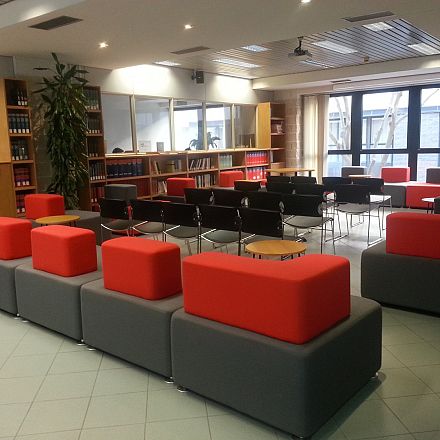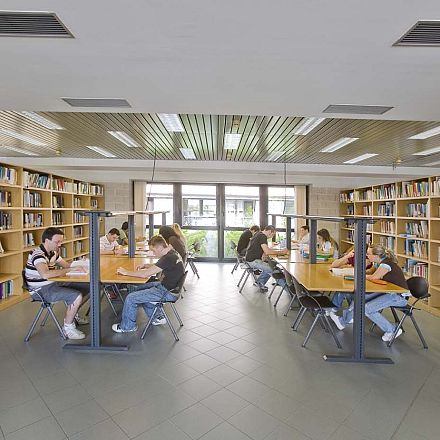SCHOOL OF ECONOMICS LIBRARY
Founded in 1991, the Library of Economics Vilfredo Pareto, located at the ground floor of building B, covers about 3000 square meters and has a total of 490 seats.
It is specialized in the traditional disciplines of the Faculty: economics, business, law and statistics and mathematics.
The equipment is made up of over 30.300 monographs, 2200 periodicals, over 2200 on-line magazines, about 800 licenses for the statistical sources and documentation, working papers of numerous agencies and Italian and foreign universities; plus a series of databases on dvd/cd-rom device and on-line search. All the library material is organized on open shelves, directly accessible to the users.
The online library consists of a rich database with information from around the world, magazines, e-books, open archives, historical sources.
All information on timetables and services offered by the Library of the Faculty of Economics, are available at: http://economia.biblio.uniroma2.it
LIBRARIES
The first idea of giving a public library in Rome belongs to Julius Caesar, who planned to provide Rome with two twin libraries: one that contained Greek texts and another with Latin texts. The assassination of Caesar on the Ides of March 44 BC, put an end to this project. The Middle Ages and the Renaissance, in Rome as in all major Italian cities, saw the proliferation of collection space for texts, so that, after two thousand years of history, it is a difficult task even trying to make a list of the libraries in Rome.
In addition to those of the district, scattered throughout the territory, mainly in the areas of the center, there are very important ones, both for their ancient institution and for the wide range of available texts. Some famous examples are the National Central Library, located in front of the metro station Castro Praetorio, established in 1876, receiving from publishers or from the heads of publications, a copy of everything that is posted on the whole national territory. Then, the Libreria Universitaria Alessandrina, inaugurated in 1667, inside the La Sapienza University campus, where you can consult books and study on your own in the study rooms, surrounded by greek-roman statues; finally the Library of the Senate, in Piazza della Minerva, Pantheon area, which provides a wealth consisting of about 700,000 volumes, 3,000 periodicals and 600 Italian and foreign newspapers, the most important collection of statutes of municipalities and corporations by the late Middle Ages to contemporary times, old editions of the common law and canonical law, one of the richest collections of the nineteenth periodicals and much more.
Here is a list of the Roman public libraries. The complete list of libraries of Rome is available on the website of Roma Capitale - Biblioteche di Roma (in italian only).
Moreover, on the Facebook page "Librerie di Roma" you can find all the initiatives on reading, promoted from time to time by organizations and associations.



